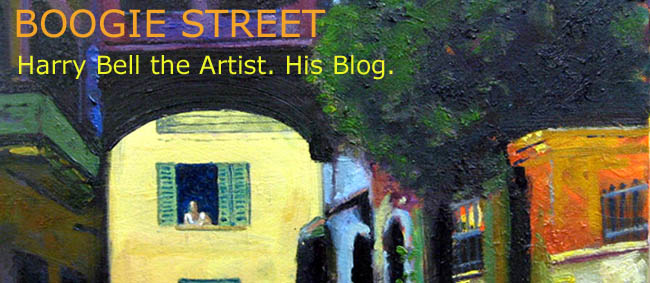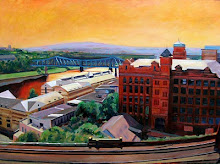
Henry Moore sculpture (etching & aquatint)

BBC4, the digital channel, have been running a truly excellent series of programmes about the Sixties and I became conscious last night that I'd not kept up to date with all of them.
They showed what I understood to be the second part of a three parter called Art and the 60s, and it was fascinating. It dealt with the radical changes in British sculpture which came about mainly through the work being done at St Martin's School of Art.
The programme led off with Anthony Caro's rebellion against the naturalism of his mentor, Henry Moore (he worked as Moore's assistant for two years). Destroying all he'd done in the Moore manner, he went on to devise a purely abstract form of sculpture made from flat aluminium rectangles, beams and rods, all painted a vivid colour
In this respect, it was interesting to hear him say that his very first sculpture in this new style was painted green. His wife told him it didn't work and suggested he paint it red, which he did.
I've never been a great lover of Caro's work, although some of his more recent work which I saw at Tate Modern a few years ago (such as Child's Tower Room), did seem to have something about it. There's no denying, however, that he set the scene for a break with sculpture of the past while providing a set of rules and guidelines (codified in print by William Tucker) to take things forward.
And following closely behind Caro was Phillip King.
King also spent a couple of years working with Moore and also came to reject his way of working. He embraced Caro's new sculptural guidelines and using new materials, such as fibreglass, produced strange, colourful sculptures derived almost entirely from his imagination, like Rosebud and Genghis Khan.. Long before I ever grew interested in fine art, I loved the work of Phillip King.
Indeed, the Sixties are where I began to be both fascinated by fine art and disillusioned by the direction it seemed to be taking. Because no sooner had Caro laid out his rules for making sculpture, then, of course, a new generation came along who saw it as their duty to throw out, or at least question those rules.
As the programme demonstrated, it was a short slippery slope through the performances of Bruce McLean, the recorded walks of Richard Long, Barry Flanagan's heap of sand with the middle scooped out, to the music hall posturing of Gilbert & George's Singing Sculpture..
My use of the term "slippery slope" I freely admit puts a slant on the programme which the producers perhaps would not want. But they were able to draw out of some of the older artists a view that much of the later work was "not sculpture."
And personally, I was fascinated by the fact that while Caro and King were prepared to talk openly about their ideas, people like Long and Flanagan were at first unwilling even to be interviewed and then either aggressive or monosyllabic in their replies to perfectly reasonable questions.












No comments:
Post a Comment